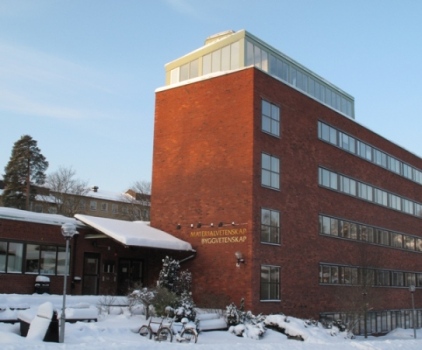Generally
In order to obtain good air quality in the premises, the ventilation is adapted to the number of people and the equipment planned for the rooms. During very hot summer days, the indoor temperature is allowed to rise slightly.
Office
The office rooms are ventilated with a continuous basic flow and have a preset room temperature.
In the high-rise building, the ventilation is switched off at night.
Conference room, some computer rooms and lab
The ventilation is automatically controlled like auditoriums via carbon dioxide and temperature sensors. The normal temperature can also be influenced via a regulator on the wall. If the regulator is turned towards plus it will be warmer and if it is turned towards minus it will be colder. Normally "Auto Mode" should be set. Then the room climate is automatically adapted to the person and heat load, in addition to a continuous basic flow.
Keep in mind that a manual change of temperature can take a long time due to the thermal inertia of the building.
Extended operating time
After regular office hours, the ventilation is switched off in practice rooms and office parts in halls 1, 2 and 3 to save energy.
During evening work, the ventilation in these rooms can be started manually via a push button in the corridor. Ventilation then continues for the set time.
Forced ventilation
The ventilation in practice rooms, student rooms and conference rooms can be forced manually via a push button. The air flow then increases during the set time.
Auditoriums
The ventilation in auditoriums is controlled automatically via carbon dioxide and temperature sensors. This means that the air circulation is automatically adapted to the person and heat load, in addition to a continuous basic flow.
